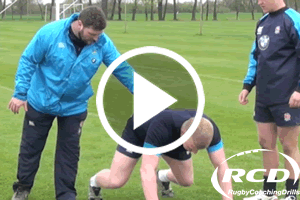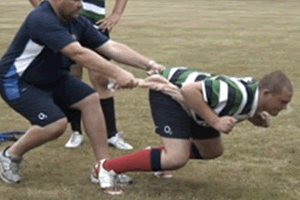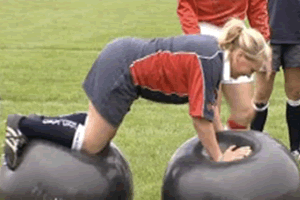
Tower Of Power - The First Stage Of Contact
The Tower Of Power
SAFE AND EFFECTIVE CONTACT BODY POSITION.
The Tower Of Power is a rugby term frequently used in training sessions. Why is it used so much? Because it is essentially the most effective and safest body position used in many technical skills in rugby. The shape is applicable to most contact situations, eg. tackle, ruck, maul and, in the vertical, the lineout jump and lift.

The Key characteristics of the TOP are;
- Feet - parallel and shoulder width apart
- Knees - soft or slightly flexed
- Pelvic Tilt - find the neutral spine shape
- Core - engage the pelvic girdle
- Scaps - squeeze the scaps, promote chest and engage upper core
- Shoulders - higher than the hips
- Head - should maintain neutral (look through eyebrows)
- Elbows - flexed
Why is it important?
- Ensures a flat/straight spine
- Reduces chance of injury
- Increases power generation
Coaching this position
NO SCRUM MACHINE = NO PROBLEM
Using rugby balls/towl!
- The knees of the player should be slightly behind the hips, with knees close to the ground and heels raised with weight through the balls of the feet.
- Start players kneeling, placing hands on rugby balls and raising knees from the ground. Coaches should correct from bottom up using TOP checklist. Do not leave players in this position for too long, because of wrist stress.
- By using a towel or strap, the coach can condition the height a player works through. The player tries to hold the posture, which may replicate that of a prop preparing to engage.
- This exercise is particularly useful for fault identification and correction, and its physically demanding nature means coaches should ensure players are physically capable of it.
Using core balls!
- The unstable nature of the core ball demands players focus on maintaining body posture. The coach can vary the practice to exert more/less pressure.
- Players can work as scrummaging units individually or in pairs. Once they are comfortable holding body shape while on the core ball, the coach can introduce a development with a partner (safely) rocking the ball to test the shape of the player in the TOP.



